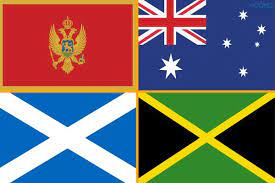Discover the symbolism and historical significance of cross flags in Europe. Explore how these flags represent unity, diversity, and important.
Cross Flags of Europe

When you mention “cross flags” of Europe, you might be referring to national flags that feature a cross as a significant element in their design. Several European countries have flags that include crosses, often reflecting historical, cultural, or religious influences. Some of the most notable examples include:
- Flag of the United Kingdom (Union Jack): Features a combination of three crosses representing England (St. George’s Cross), Scotland (St. Andrew’s Cross), and Ireland (St. Patrick’s Cross).
- Flag of Switzerland: A square flag with a white cross on a red background, representing freedom, honor, and fidelity. The Swiss flag is one of the few square sovereign-state flags.
- Flag of Sweden: A blue field with a yellow (or gold) Scandinavian cross that extends to the edges of the flag. The design symbolizes Christianity and is reflective of the Swedish coat of arms.
- Flag of Norway: A red field with a blue cross outlined in white. The cross is off-centered towards the hoist (the flagpole side), following the Nordic tradition.
- Flag of Denmark: Known as the Dannebrog, it is a red flag with a white Scandinavian cross that extends to the edges of the flag. It is considered one of the oldest national flags in the world.
- Flag of Finland: A white field with a blue Scandinavian cross. The design reflects the country’s natural elements, with blue symbolizing the many lakes and the sky, and white representing the snow.
- Flag of Greece: Features nine blue and white stripes with a blue canton containing a white cross. The stripes represent the syllables in the Greek motto of freedom or death.
- Flag of Iceland: A blue field with a white cross inside a red cross, following the Nordic cross design. The colors represent elements of Iceland’s nature, such as its volcanoes, snow, and the ocean.
These flags, among others, are often referred to as “Nordic Cross flags” when they follow the specific design pattern seen in Scandinavian countries, characterized by the cross being off-center towards the hoist side. The cross symbol typically has Christian origins, representing Christianity, which has played a significant role in the history and culture of many European nations.
Conclusion
The cross flags of Europe carry deep historical meaning, symbolizing unity, diversity, and significant events. From the Nordic cross to the Russian Orthodox cross, these flags tell stories of shared heritage and cultural differences. They remind us of the importance of embracing diversity while cherishing the values that unite us. As we observe the cross flags of Europe waving proudly, let us reflect on the past and work towards a future that celebrates both our differences and our commonalities.